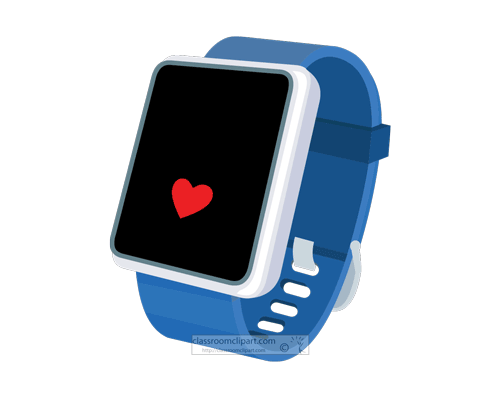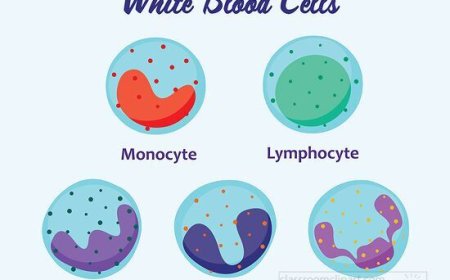What Do White Blood Cells Do? Exploring the Immune System’s Warriors
Discover how white blood cells like macrophages, T cells, and B cells protect your body from infections and keep you healthy.
🦠 White Blood Cells and Their Roles
(Part of the Immune System Series – “The Body’s Defense Team”)
SEO Title: What Do White Blood Cells Do? Exploring the Immune System’s Warriors
SEO Description: Discover how white blood cells like macrophages, T cells, and B cells protect your body from infections and keep you healthy.
SEO Keywords: white blood cells, immune cells, macrophages, T cells, B cells, how body fights infection, immune defense, blood cell types, immune response in body
🧠 Introduction: Meet the Immune System’s Heroes
Inside your body, there’s a tiny army of powerful defenders working to keep you safe. They are called white blood cells, and they are the true heroes of your immune system. While red blood cells carry oxygen, white blood cells fight off dangerous germs that can make you sick.
These cells come in different types and have different jobs. Some gobble up germs. Others make special proteins to destroy invaders. And some give orders or remember germs so your body can fight them off faster next time.
In this article, we’ll meet the main types of white blood cells:
🦠 Macrophages – the germ-eaters
🎯 T Cells – the attackers and commanders
🧬 B Cells – the antibody makers and memory keepers
Let’s find out how each of these immune warriors helps defend your body!
🧫 What Are White Blood Cells?
White blood cells, or leukocytes, are found in your blood and tissues. They make up only about 1% of your blood, but they play a huge role in fighting infections. These cells are made in the bone marrow and are part of both the innate and adaptive immune systems.
White blood cells move through your body looking for pathogens (harmful invaders like viruses and bacteria). When they find one, they act fast—attacking, sending signals, or calling in backup.
🦠 Macrophages: The Germ Eaters
The word “macrophage” means “big eater”—and that’s exactly what these white blood cells do. Macrophages are part of the innate immune system and act quickly when germs enter your body.
What Macrophages Do:
Patrol your body for invaders
Swallow and destroy bacteria and viruses (a process called phagocytosis)
Clean up dead cells and debris
Alert other white blood cells by sending out chemical signals
Macrophages are like the security guards of your body—first on the scene and ready to fight.
🧬 B Cells: The Antibody Makers
B cells are part of the adaptive immune system. That means they are slower to react but very smart. They recognize specific germs and help your body remember them.
What B Cells Do:
Spot foreign invaders like bacteria or viruses
Make antibodies, which are proteins that tag invaders so other cells can destroy them
Store memory of past infections to help fight future attacks
When you get a vaccine, it helps train your B cells to recognize a germ without you having to get sick first!
🎯 T Cells: Attackers and Leaders
T cells are another major type of white blood cell. They are smart, powerful, and have special jobs.
There are two main types of T cells:
Helper T cells – They give directions to other immune cells and tell them when to attack
Killer T cells (Cytotoxic T cells) – They find infected cells and destroy them before the infection spreads
What T Cells Do:
Spot cells infected by viruses or cancer
Destroy infected or damaged cells
Help control the immune response
Work with B cells to create long-term immunity
T cells are like military commanders and special forces—they don’t just fight; they lead the immune army.
🧪 How White Blood Cells Work Together
No single white blood cell works alone. They team up to create a strong immune response:
A macrophage finds a germ and sounds the alarm
A helper T cell hears the signal and activates B cells and killer T cells
B cells make antibodies to fight the germ
Killer T cells destroy infected cells
Memory B and T cells remember the germ in case it comes back
It’s like a team sport where every player has a role—and the goal is to protect your health!
🧠 Vocabulary List
White blood cells – Cells that fight germs and protect the body
Macrophages – White blood cells that eat and destroy germs
Phagocytosis – The process of a cell swallowing a germ or debris
T cells – Immune cells that attack infected cells and lead other immune cells
B cells – Immune cells that make antibodies and remember infections
Antibodies – Proteins that help identify and destroy harmful invaders
Pathogens – Germs like viruses, bacteria, or fungi that can cause illness
Adaptive immune system – The part of your immune system that learns and remembers
Innate immune system – The fast-acting, general defense system
Bone marrow – The soft tissue inside bones where blood cells are made
❓ Interactive Quiz: White Blood Cell Challenge
1. What do macrophages do?
A. Carry oxygen
B. Destroy germs by eating them
C. Make red blood cells
D. Attack healthy cells
2. What kind of cell makes antibodies?
A. T cells
B. Red blood cells
C. B cells
D. Platelets
3. What is the job of killer T cells?
A. Help B cells make antibodies
B. Destroy infected or cancerous cells
C. Carry oxygen through the body
D. Create blood clots
4. Where are white blood cells made?
A. Brain
B. Lungs
C. Bone marrow
D. Heart
5. What does the adaptive immune system do?
A. Always attacks any germ
B. Creates memory to fight future germs
C. Forms skin and tissue
D. Pumps blood
🟢 Answers: 1-B, 2-C, 3-B, 4-C, 5-B
⭐ Kid-Friendly Summary
White blood cells are your body’s secret agents. They protect you from getting sick by fighting germs, making antibodies, and even remembering past infections. The main types are macrophages (who eat germs), T cells (who attack and lead), and B cells (who make antibodies and remember germs). They all work together like a superhero team to keep you safe and healthy!
🤯 Fun and Interesting Facts
Your body makes millions of white blood cells every day!
White blood cells only live for a few days to a few weeks, but they're always being replaced.
Macrophages can eat 100 germs in a single day!
Vaccines help your B and T cells remember how to fight certain diseases.
Some white blood cells can change shape to squeeze between blood vessels and tissues.




















































